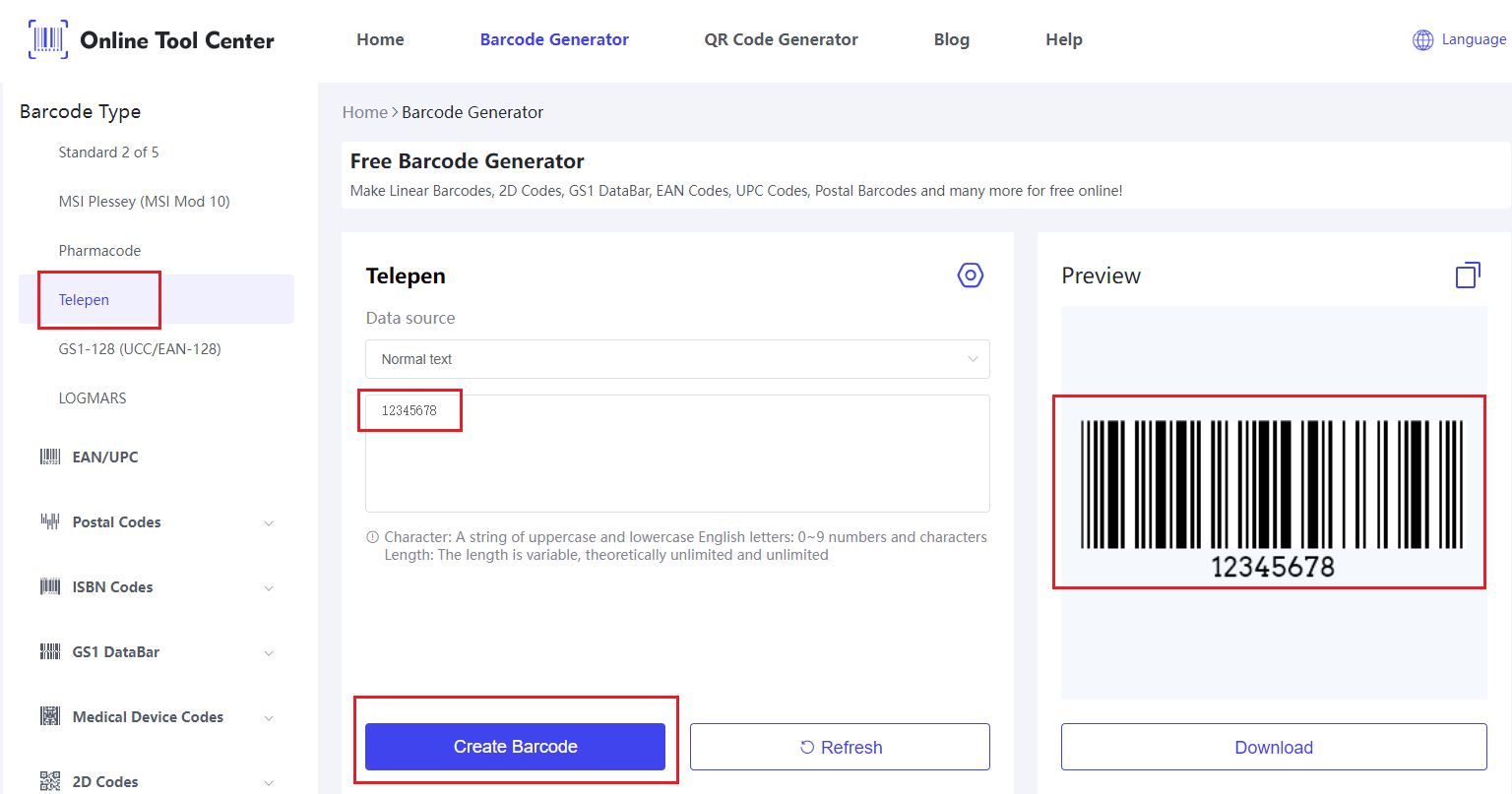Overview of Telepen Barcode
The Telepen barcode is a type of one-dimensional barcode created in 1972 by George Sims from SB Electronic Systems Ltd, a company in the United Kingdom. It is designed to be continuous and can vary in length, which means it can encode any number of characters without a fixed limit.
Telepen distinguished by its high data density and error correction capabilities, plays a pivotal role in efficient data encoding. Its design allows for accurate data capture and storage, making it a favored choice in sectors where precision is paramount.
Importance in Data Encoding and Industries
The Telepen barcode system is vital in industries requiring reliable data management and tracking solutions, such as healthcare, retail, and logistics. Its accuracy in data encoding ensures streamlined operations and enhances inventory and asset management.
History and Development of Telepen
Developed in the 1970s, Telepen was designed to encode the full ASCII character set, offering a versatile solution for data encoding. Over time, it evolved to meet the increasing demand for robust data management systems, adapting to various industry needs.
Specifications of Telepen
1. Structure and Components
A Telepen barcode comprises start/stop characters, data characters, and often a checksum for error correction. This structure ensures accurate reading and data integrity.
2. Encoding Mechanism
Telepen barcodes use a bitstream division method, with the widths of bars and spaces encoding the data. This technique contributes to the high data density of Telepen.
3. Variants
The technology comes in three variants: Numeric, Alphanumeric, and Full ASCII, each designed to cater to different data encoding requirements.
4. Advantages of Using Telepen
Telepen barcodes offer high data density, excellent error correction, and versatility in customization. Their secure and easily readable format makes them an ideal choice for various applications.
Applications of Telepen
1. Libraries
A case in point is the use of Telepen barcodes on library cards and book spines. This system allows for automated check-in and check-out processes, inventory tracking, and management of library resources, facilitating a seamless borrowing experience for users and efficient inventory control for library staff.
2. Healthcare
In the healthcare industry, Telepen barcodes are extensively used for patient identification. For example, wristbands with Telepen barcodes are used in hospitals to ensure that patients receive the correct medication and treatments.
3. Retail
In the retail sector, Telepen barcodes are pivotal in product tracking and inventory management. A notable application is in supermarkets, where Telepen barcodes are used on products to streamline the checkout process and manage stock levels.
4. Identification
Telepen stores essential information securely and compactly, allowing for quick and accurate verification of an individual’s identity. This application is crucial in enhancing security and streamlining the identification process at borders and during traffic enforcement.
Generating Telepen: A Step-by-Step Guide
Here's how to generate a Telepen barcode:
Step 1: Access the Barcode Generator
Access a free online Telepen barcode generator and navigate to the barcode generator section. Select the option for generating Telepen barcodes to start the process.
Step 2: Enter and Create Your Data
Type the information you want to encode and then click the create button to generate your Telepen barcode.

Step 3: Customize Barcode Settings
Adjust any necessary settings for your barcode, such as the size, font, width, height, and so on.
Step 4: Check and Download the Barcode
Examine the barcode to ensure it accurately represents the data you entered and adheres to the Telepen standards.
Step 5: Scan and Print
Once you have generated the Telepen, the next crucial steps are scanning and printing to ensure its usability in real-world applications. Use a Telepen barcode scanner, which is specifically designed to read this barcode format. Scanning the barcode ensures that it accurately represents the encoded data and can be read by Telepen-compatible scanning devices.
By following these steps, you can efficiently generate Telepen barcodes suite for your specific requirements, ready for use in various applications and systems.
FAQs
1. What is the difference between Telepen Numeric and Telepen Full ASCII?
Telepen Numeric is optimized for encoding numbers, offering higher density for numeric data, while Telepen Full ASCII can encode the full range of ASCII characters, providing versatility for diverse data types.
2. How can Telepen be integrated into existing systems?
Integration involves using barcode generators and scanners compatible with the Telepen format, ensuring seamless data capture and management within existing systems.
3. What are the common challenges in scanning Telepen and how to overcome them?
Challenges include poor print quality and scanner compatibility. Overcoming these requires ensuring high-quality barcode printing and using scanners that are specifically calibrated for Telepen barcodes.




